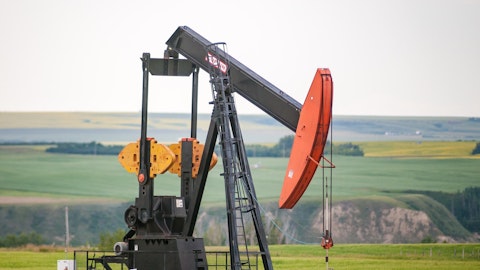So on an M&A basis, we’re going to continue. You’ll see no change on the approach there. One of the key characteristics of our M&A approach hasn’t just been on making sure we see the financial accretion on deals with cash flow per share NAV per share. But the other factor, which is really showing up is our commitment to buying low-cost, high-quality assets and in a low cost low price environment today, you’re seeing the benefits of that. And so we’ll continue to reinforce that element of our M&A strategy.
Operator: Our next question comes from Sam Margolin with Wolfe Research. Your line is now open.
Sam Margolin: I wanted to ask about the remark on Slide 12 about looking at new well designs. And maybe just talk a little bit about like some specific outcomes you’re going for with this approach, whether it’s like a PDP extension type of outcome or if it’s to manage declines? Or what exactly is going on with that comment?
Toby Rice: Yes. I mean the ultimate approach in any of the science work we do is improve the economics of the projects that we’re developing. The science that we’re doing is going to have the effect of lowering our F&D through increasing the performance on an EUR per foot basis, but that does come with some associated increase in costs. So for us to make a full determination on the economics that we’ll receive with this well design, we really need to continue through the monitoring period of the signs that we have in the ground right now. And also, we’ll pair that up with service cost inflation expectations and make a decision. Insight date for that is towards the middle part of this year. So we’ll come back to you with an update as we get this information.
Sam Margolin: And then just as a follow-up that you just mentioned with respect to inflation. And you mentioned you thought that the current market would drive some activity levels lower. And I wonder if you could just characterize a little more of your outlook here, if it’s just — do you think that sort of unit cost on the service side are nearing a plateau or if maybe the activity levels were so overheated, that we could actually see services kind of give back some price right now just because of the severity of the market conditions?
Toby Rice: Yes, it’s been a hot market the last 6 months, specifically. But I think with the pullback in commodity prices, we do anticipate to see some activity reductions. You’re already seeing it from what we consider the marginal producer here in the U.S. and the Haynesville. So I think in the next — over the next few weeks, we’ll have a better view on activity levels and how they’re coming down. And ultimately, that should translate to lower service costs in the future, and we’ll be monitoring that closely.
Operator: Our next question is from David Deckelbaum with Cowen. Your line is now open.
David Deckelbaum: Congrats, David, best of luck in the next chapter. I was hoping to just ask when you thought about 2023 planning, you obviously envision a large ramp in the back half of the year, which I suppose is just a function of the timing of TILs. I’d like a little bit of color how you’re thinking about the risks around that ramp. But also just curious how the closing timing of Tug Hills sort of informs what you’re doing this year on sort of legacy EQT or core EQT, where there might have been incremental activity that would have otherwise maybe been allocated towards West Virginia.





